Staghorn Fern Care
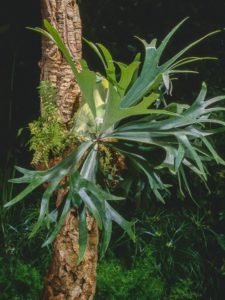
*Staghorn ferns (Platycerium bifurcatum) are epiphytes which grow in tree tops in Australia, Madagascar, Phillipines, Africa, Southeast Asia and America. There are many species of Staghorn ferns, each requiring different growing conditions. The Platycerium bufurcatum is the most common species in cultivation due to their ease of care.
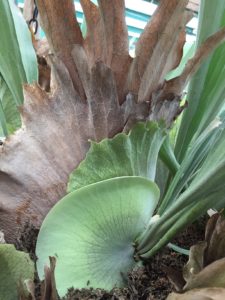
*Staghorn ferns have both sterile fronds and fertile fronds. The sterile fronds are the disc shaped fronds that serve to attach the plant to a tree, capturing rainwater and debris for nutrients. Sterile fronds also break down to provide nutrients for the plant.
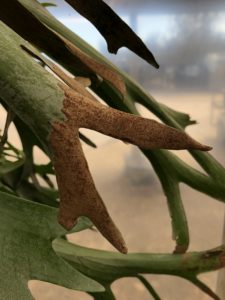
*Fertile fronds are longer, look like “stag horns” and will produce cinnamon-colored spores in their reproductive process.
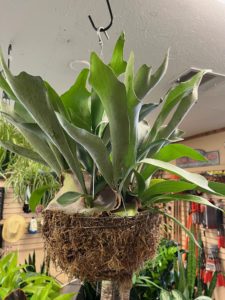
*Staghorn ferns may be grown in a hanging basket or mounted on a board, driftwood or other mount.
*Locate staghorn ferns in bright indirect or filtered light. Under a tree in dappled sunlight outside in the summer is ideal. Inside, a bright window without direct sun is recommended.
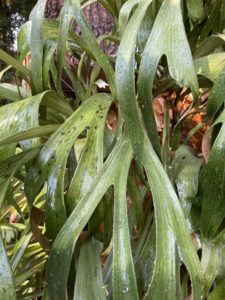
*Staghorn ferns should dry out between watering. (Unlike other ferns!) Soaking them once a week in hot weather should be sufficient, or every 2-3 weeks in the winter.
*Overwatered ferns are prone to rhizoctonia fungus, which appears as black spots on the leaves.
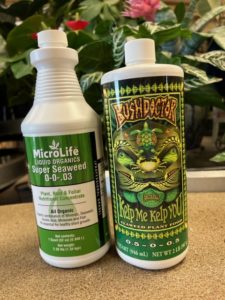
*Fertilize your staghorn monthly with a seaweed/fish fertilizer mix or a balanced organic liquid fertilizer. Mix according to directions and simply drench the plant or spray with a hose-end applicator.
*Staghorn ferns may be repotted or divided when they are too large for the mount. Use long-fibered sphagnum peat moss to line a basket, or nail the wood plaque to a larger wood plaque if outgrowing the mount. Individual plants may be separated from the main plant and potted or mounted in its own pot or plaque.
*Most staghorn ferns available in nurseries are cold-tolerant to 30 degrees F. Be prepared to move it to a heated location if kept outside in the winter.
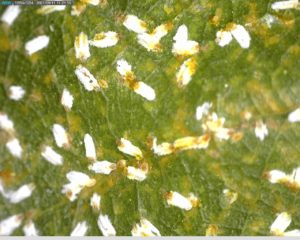
*Few pests bother the Staghorn fern, but occasional scale insects may be a problem. They are usually soft brown scale or a very small white scale. They are easily treated with a horticultural oil when temperatures are between 45° and 85°F and humidity is low. The fast-drying action of the oil will smother the insects.

*Overwatering may cause black fungal spots on leaves. Remove the infected leaves and cut back on frequency of watering. A fungicide may be necessary for control.

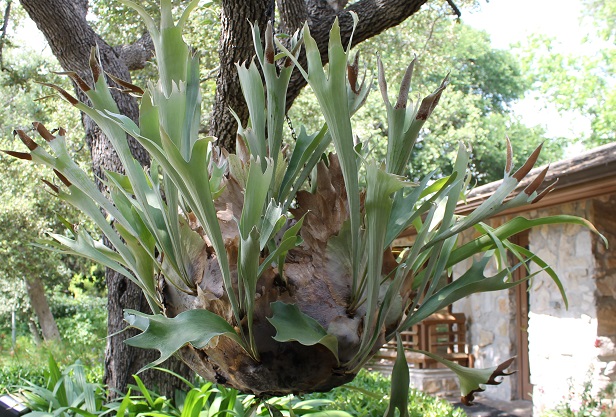
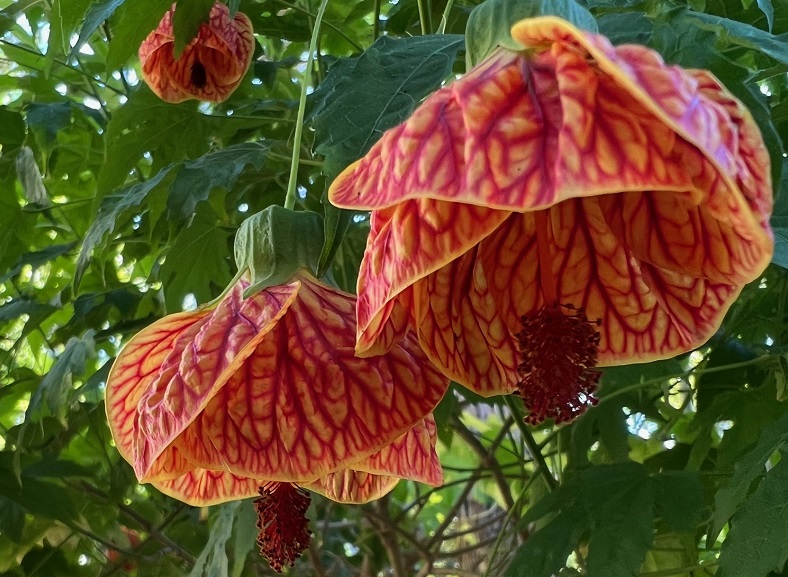
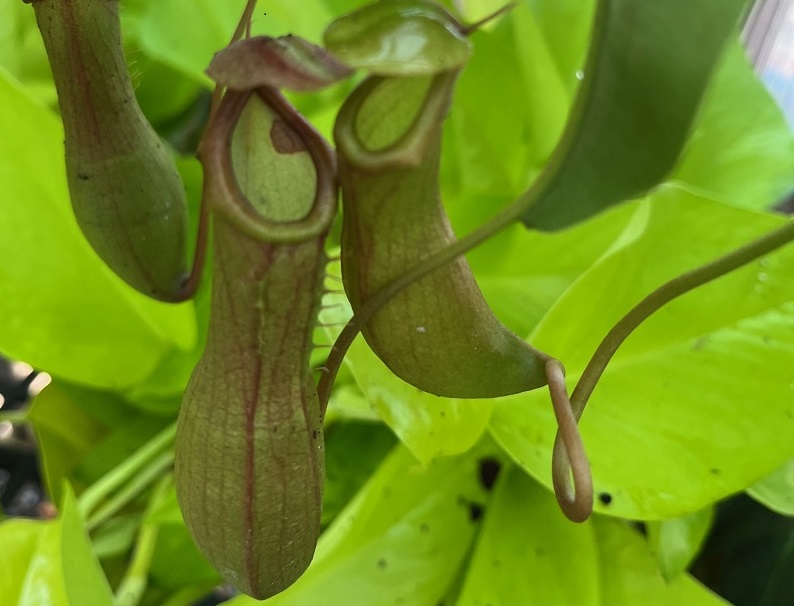

Leave A Comment